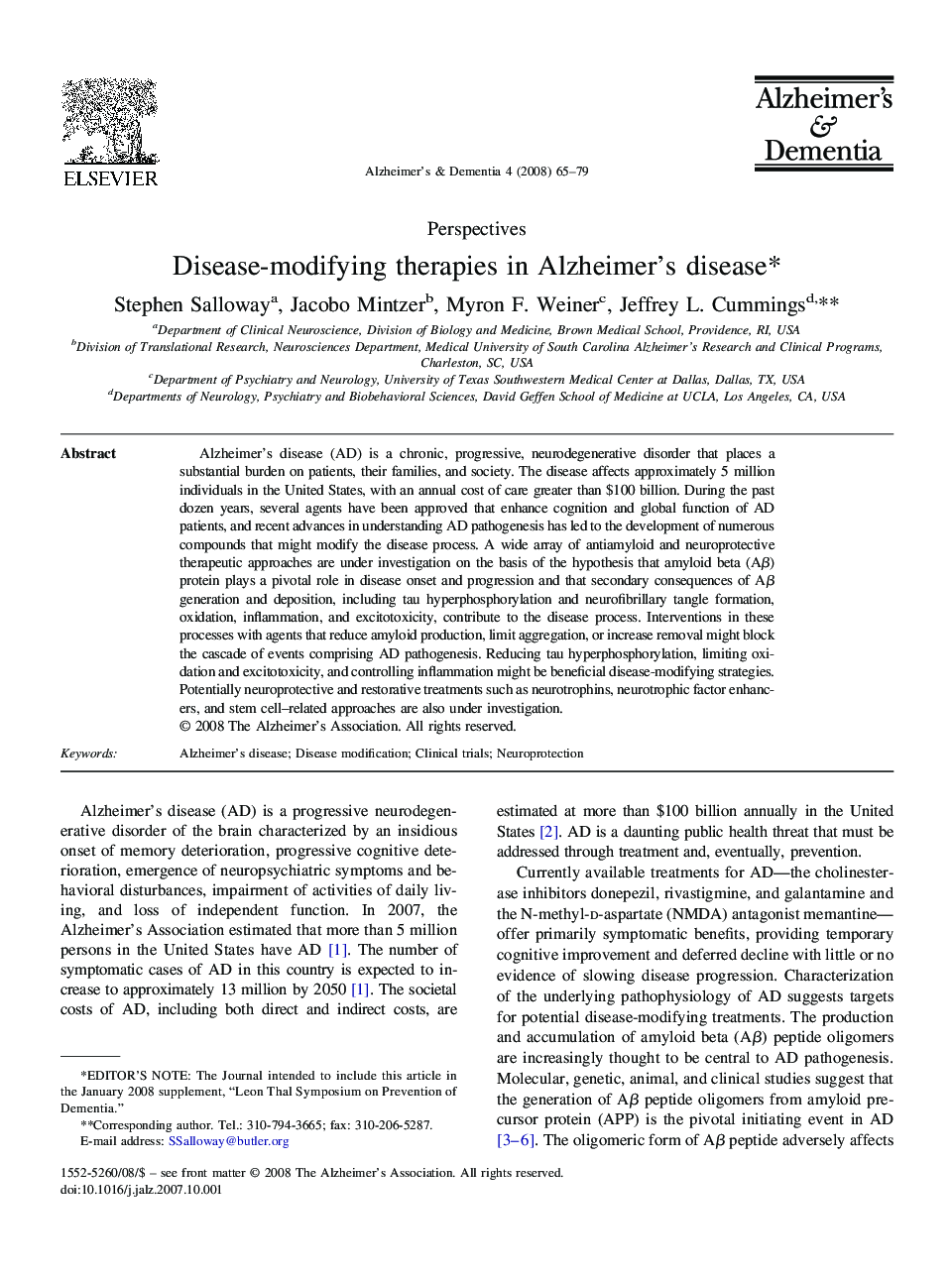| Article ID | Journal | Published Year | Pages | File Type |
|---|---|---|---|---|
| 5625223 | Alzheimer's & Dementia | 2008 | 15 Pages |
Alzheimer's disease (AD) is a chronic, progressive, neurodegenerative disorder that places a substantial burden on patients, their families, and society. The disease affects approximately 5 million individuals in the United States, with an annual cost of care greater than $100 billion. During the past dozen years, several agents have been approved that enhance cognition and global function of AD patients, and recent advances in understanding AD pathogenesis has led to the development of numerous compounds that might modify the disease process. A wide array of antiamyloid and neuroprotective therapeutic approaches are under investigation on the basis of the hypothesis that amyloid beta (Aβ) protein plays a pivotal role in disease onset and progression and that secondary consequences of Aβ generation and deposition, including tau hyperphosphorylation and neurofibrillary tangle formation, oxidation, inflammation, and excitotoxicity, contribute to the disease process. Interventions in these processes with agents that reduce amyloid production, limit aggregation, or increase removal might block the cascade of events comprising AD pathogenesis. Reducing tau hyperphosphorylation, limiting oxidation and excitotoxicity, and controlling inflammation might be beneficial disease-modifying strategies. Potentially neuroprotective and restorative treatments such as neurotrophins, neurotrophic factor enhancers, and stem cell-related approaches are also under investigation.
